Podcast: Play in new window | Download
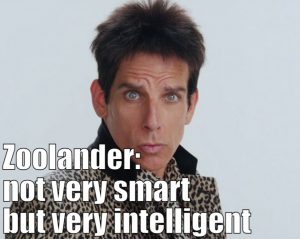 Taking you from smart to intelligent…
Taking you from smart to intelligent…
OK, my intention is to teach you to become intelligent… Lots of people will teach you stuff that is going to help you to regurgitate stuff, look good and smart to others, but is otherwise useless… for life.
So I am really only interested in making you intelligent. And so that you know: intelligence is 70% physical, and only 30% mental. You don’t learn it through mental means: you learn it through being in intimate touch with your physical self, and I am not talking about muscles, and athleticity, I am talking about everything physical, including all the senses, hearing, seeing, smelling, tasting and touching.
OK, after this preamble, we can start…
I was just checking what the dictionary says about intelligent vs. smart. Turns out that probably intentionally, just to make you less intelligent, they use the two terms opposite of what they actually measure.
Here is just one of the definitions on the internet:
- The difference between smartness and intelligence is mainly behavioral. (truth value of this statement: 20%.)
- While an intelligent person can be smart, a smart person may not be intelligent. (truth value of this statement: 80%.)
- Intelligence means the ability to acquire information rather rapidly. (truth value of this statement: 30%.)
- Intelligence is a trait a person has since birth. (truth value of this statement: 10%.)
As you may see, there is no clarity in the definition. Given the low level of truth value overall in the current ‘knowledge’ of humanity, there is no usable knowledge floating around on the internet… You find plenty of information that is both misleading and useless…
OK, for the purposes of our conversations, I call what you are born with smart… and what you develop I will call intelligence.
Ultimately what intelligence measures is the PHYSICAL brain structures you have built in your brain that make it possible to learn new things and use them. This is how the behavior effects the number you get.
The brain of a highly intelligent person looks different from a very smart person’s… In this article the main focus is: how come?
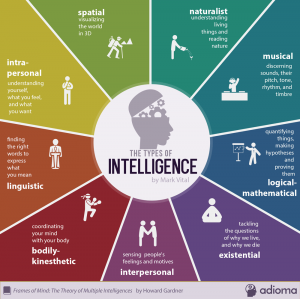 I have raised my intelligence (my measures, not some IQ test… muscletesting!) from 100 at age 16 to 170 today. Did I get smarter? No. I am as dumb as I was at age 16.
I have raised my intelligence (my measures, not some IQ test… muscletesting!) from 100 at age 16 to 170 today. Did I get smarter? No. I am as dumb as I was at age 16.
But I can do a lot more with that brain of mine… due to all the structures I have built in my brain, intellectual and practical knowledge combined. Very physical.
The structures act like scaffolding. These are structures that are also called furring strips, and in the Learning how to learn course, they are called chunks… these are invisible information structures in the brain making additional learning possible: the new knowledge can attach to these scaffolding aka furring strips.
By the way, this is how nature builds stuff. For example we have cancer cells floating around in our body all the time. Unless they have a chance to clump, they won’t grow into actual cancer, the kind that kills. The same is with knowledge
The first such structures develop in the early years, while you are still in theta brain state where your brain accepts whatever is thrown at him without any conscious thought, any filter, it is like a sponge: it doesn’t care what it soaks up… it doesn’t discriminate… Depending on how much exposure, stimulus, challenges you were exposed to during those years, you could get a good head start, or a poor head start.
Most of that information comes from physical activity, most importantly from crawling. On the floor. Looking at things, bumping into things, seeing the underside of things.
Grabbing things, opening things, tasting things, banging on things. Unstructured. Fun for the child, looks dangerous to the parent.
Being protective or disciplinary about a child’s behavior, you make the biggest difference in what they are going to be later in life… smart with no intelligence, or smart with amazing intelligence. It is, at this point up to you.
I have a 2-year old in the next house, and she loves to come to my apartment. Spends an hour or two, supervised by her mother, exploring everything in my apartment. She loves it even more than the playground.
At that age, very much theta brain mode… is very very very physical. Teaching the child anything non-physical, in my not so humble opinion, is abusive. It derails the personal human evolution and development, and puts too much emphasis on smart… instead of intelligence, which is mostly body. In fact 70% body. Feelings. Self-awareness.
If you grew up to be smart but not intelligent, you’ll probably end up with a child like yourself… smart but not intelligent. Not happy, not successful, not able to grow, not able to learn, because they will consider only mind-learning learning… and learning is 70% physical.
Many of my students have a higher number for smart than they have for intelligence. One of my students has 100 for smart, and 70 for intelligence. Another student has 100 for smart, and 110 for intelligence. That is the direction you want to move to… your smart measure is fixed… but you can increase your intelligence with tenacity, and persistence.
What’s missing? Why are there so many smart people who are less than successful?
This is going to be a series.
- This part deals with learning… The brainstate conducive to learning…
- Then, in coming parts, we’ll talk about why you can’t learn something, even though you are smart…
- Why you can’t use something that you thought you learned or knew…
- And what you can do so you can go from smart to intelligent.
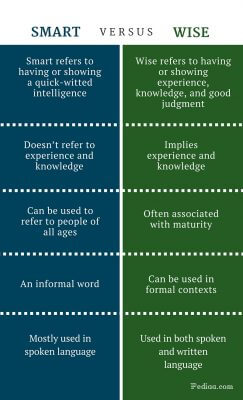 Intelligence is the ability to get results with the knowledge you have… as opposed to smart: able to get a lot of knowledge…
Intelligence is the ability to get results with the knowledge you have… as opposed to smart: able to get a lot of knowledge…
I just finished the Learning how to learn course
Here are some observations and thoughts that will raise that course’s truth value to 60%. Without these, it is 30%. Not bad… but not very good either.
Important distinctions of the course: (there are more, but these are the most important barriers to learning.)
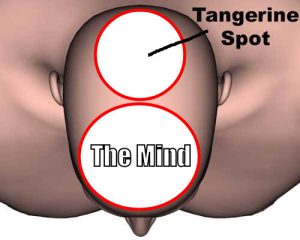 Some new distinctions from the Learning how to learn course
Some new distinctions from the Learning how to learn course
Focused state learning vs. fuzzy state learning
In the visible domain, the difference is your brain’s attitude about the material, the brain’s approach. Mental.
In order to get into the focused state, the brain needs to first FORCE itself to exclude everything else, so it narrows your cone of vision, your cone of hearing, it tries to ignore your back itching, your butt hurting on the chair… because it is HELLBENT to get what you are intending to get.
I used to get into this mode occasionally, especially when I saw a tutorial, a questionnaire to fill in, a quiz… The emotional state there is fear.
Fear of making an ass of myself.
And it was, predictably, a self-fulfilling prophecy: in that focused state I could not get the question right (the context), so my answers were predictably wrong. I didn’t understand the tutorial… I got dumber than dumb. For a long time I really thought I was dumb.
At some point, since I started doing this work, and connecting to Source much of the day, this attitude towards questions and tutorials has gotten a whole lot better. It is still there… until I look to feel my feelings, feel the fear, and relax into it.
So what is there for people who cannot learn — despite their intention to learn?
This is the question I had on my mind when I did some back and forth with one of my students who hasn’t been able to learn the foundation of the Playground course, despite her spending a lot of efforts to do so.
Our exchange ended with me saying ‘it took me years to get it… so there is no hurry’, and her answering ‘Oh dear! Well, at least that lessens the fear of being left behind…‘
- Another one of the distinctions of the Learning how to learn course is
‘project vs process’
Mu Playground student was, obviously, in project mode. Project mode focuses on the result, the end. Getting through it… not DONG IT. ‘I will get this done, no matter what! and FAST! So I’ll be done with it… Check.‘
And although she used tools of process learning, she was HELLBENT, and that made her do all the things hellbent people do: force, force, and force some more.
In that state ‘project mode’ learning is impossible. Literally no new knowledge goes through… it becomes rote memorization at best that never amounts to knowledge.
It is like trying to convince a mad drunk that the other person, he is fighting and hellbent to kill, didn’t mean to insult him. He will turn his fury towards you, kill you, and then kill the offending other as well.
Yeah, and most of you, who even make efforts to learn, do that.
Forceful, beating the material into submission.
You can notice it in your breathing. You can notice it in your posture. And you are tired, and you are used up, and you are wrong, and you are, ultimately, an underachiever. Smart but not intelligent.
The course, Learning how to learn, has two other distinctions that you try to benefit from: focused brain state, and fuzzy brain state. In essence, how my students interpret it, is…
Narrow cone of vision, nose to the grindstone, and wide cone of vision.
Obviously, like everything on the Internet, the creators of the course approach everything from the visible… and get stuck in the visible… the 1% or reality.
- I don’t know about the focused state, but if I had to rename it: I would call it the hellbent state… forceful.
- And the fuzzy brain state: the only brain state where learning happens while you are awake and aware, is the theta brain state…
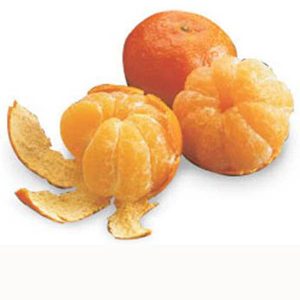 I learned to move into that brain state in the Photoreading course… for me it was easy. You put your attention, gently, no forcefully, on your tangerine spot… the spot where a flat bottom tangerine would sit safely if you had one, and keep it there… balancing the flat bottom tangerine.
I learned to move into that brain state in the Photoreading course… for me it was easy. You put your attention, gently, no forcefully, on your tangerine spot… the spot where a flat bottom tangerine would sit safely if you had one, and keep it there… balancing the flat bottom tangerine.
Anything and everything coming at you while you are in theta brain state becomes food for your brain. Concepts just rush in, and you don’t have to do anything to learn.
Little kids are in theta brain state, sucking up knowledge like a sponge. It is by design: to live in this world, you have to know a lot of things.
 Of course, in the theta brain state the brain will not be able to tell if what you are learning is bullsh*t or if it is worth learning, but once the knowledge is there, you can allow the brain to sort it through, separate the wheat from the chaff. This is called winnowing: blow a current of air through (grain) in order to remove the chaff.
Of course, in the theta brain state the brain will not be able to tell if what you are learning is bullsh*t or if it is worth learning, but once the knowledge is there, you can allow the brain to sort it through, separate the wheat from the chaff. This is called winnowing: blow a current of air through (grain) in order to remove the chaff.
 I call it contemplating, and I do it throughout the day. Even when I read a book, article, watch a movie… I stop it and contemplate. Not forcefully. My body tells me to stop and contemplate.
I call it contemplating, and I do it throughout the day. Even when I read a book, article, watch a movie… I stop it and contemplate. Not forcefully. My body tells me to stop and contemplate.
Television especially puts you into theta brain state, so every b.s. they say gets absorbed, and unless you winnow, stays there.
Why television? It’s probably technical… because videos on computer screens don’t do it.
You can, maybe, see that being in the forceful ‘focused’ hellbent mode, there is no winnowing going on… all is treated the same way.
I have been teaching people to get into the theta brain wave mode. And while they can while I am checking it, they promptly enter focused mode a minute later…
So most people cannot learn, cannot stay ‘loose and yet awake and aware’, they only know two modes, sleepy/asleep and forceful.
If you learned to feel your feelings, your physical feelings, you would be able to tell where your brain is at…
In focused mode the gentle pressure is in the front part of the brain, meaning in the front half… not just the forehead… the front half.
That is the mind’s location where all forcing comes from.
And when you are in fuzzy mode, you are balancing a tangerine that is about to slid off, backwards… so the area where the tangerine would be, signals a gentle pressure.
A onetime student and friend used to put a rubber band to the tangerine spot, and the small weight on his skull directed his attention. So he managed to be in theta brain state most of the time.
But when, in classes he wanted to answer a question, he promptly slid into mind-mode, and said something stupid.
It was the next step that he could not wrap himself around: stay in fuzzy mode.
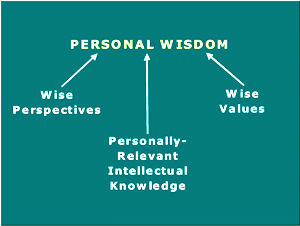 It happens that in fuzzy mode, the eyes relax as well, and widen the field of vision, inside and outside, so they can see more than just what is at hand… that is what allows the ‘winnowing’ to happen: other stuff already in the brain informs the brain whether what is new, the incoming, is wheat of chaff.
It happens that in fuzzy mode, the eyes relax as well, and widen the field of vision, inside and outside, so they can see more than just what is at hand… that is what allows the ‘winnowing’ to happen: other stuff already in the brain informs the brain whether what is new, the incoming, is wheat of chaff.
Of course, most of what a regular person has in their brain is Tree of Knowledge, so 95% chaff… so being it theta mode, and pondering mode, while you walk, while you are in the shower, etc. you can get rid of a lot of the chaff… if your pondering is in theta mode.
I have a student who says he is pondering, but my hunch is that he is forcing pondering, because his view is narrow, and he never even attempts to check the veracity of his convictions.
He is the kind of guy who comes to every call with a new conviction, and doesn’t even have a question why he is so convinced about all of them… and hasn’t come to a coherent picture yet.
And he hasn’t… If he continues to do pondering as a forceful exercise, he never will.
Some soul corrections really struggle with being able to, being willing to see the big picture, what is the direction to go, what is the real issue, what there is to do.
If you are paying attention, what should strike you is how physical learning is… 70% is physical, and only 30% is mental.
At the end of the connected meditations, the brain calisthenics exercises, I used to ask the participants to open their eyes, and gently look around in the room… without naming what their eyes looked at.
In theta brain mode you can do that, in mind brain mode, you have to… meaning: no mystery, no openness, you already know, you are closed to surprises, to wonderment.
I am now looking through old articles, to see what else I have been able to see about you that would, maybe, help me to help you to become flexible and become a person who can learn… and enjoy learning.
If you read this article attentively, you could see in the paired distinction, the either/or distinctions above, what states you are unable to learn.
- 1. focused mode
- 2. project mode
- 3. narrow cone of vision/fear mode/concern mode
I didn’t talk much about the project mode… so here it goes. In project mode you are more interested in getting to the other side of the project, than the process of going through it.
I prefer to call that mode homework mode.
Full of haste, forcing, and ultimately a definite distaste for the doing part.
If you are in project mode/homework mode, you can’t learn. Because you cannot keep your attention on what you are doing: you only want to get to the other end.
- Most people even eat this way. They go to a restaurant, order some expensive food, and then rush through it.
- Most people drink this way: they just want the buzz.
- Most people have sex this way: just want to have the 3-second experience at the end.
- Most people travel this way: they just want to show their travel pictures to everyone… not go through the experience themselves.
It is an unproductive, unintelligent approach to living.
Older people say: life got faster… but life is not faster… it goes a minute every minute… except you are not there for the minute, you are there only for whatever you aim for.
When you go to bed, you just want to fall asleep… so you miss the beauty and enjoyment of the being alone in the dark, finally being able to be yourself. To ponder. Digest. Winnow.
Oh well…
OK, here are the elements of being and staying in theta brain mode:
Entering theta brain wave
- 1. locate your tangerine spot.
- 2. gently gather, like a bunch of flowers, all your attention on it to activate. Press with your attention… the Tangerine Spot is like a switch
- 3. you know your tangerine spot is active if and when it buzzes (or you feel a gentle pressure in the bones of you skull).
- 4. keep it on… if accidentally you lose it, just return, gently, and activate it again.
use this state to
- 1. listen to videos, audios, lectures, webinars
- 2. read articles
- 4. read books
- 5. in your interactions.
Being in theta state allows you to stay out of your mind, as long as you are in theta state… it should be obvious… the buzzing T-spot.
- no labeling, no naming, no comparing, no self-deprecating
- wide cone of vision
- perception mode
And a video and webinar on my subscribers’ site:![]() Sign up the the live feeling webinar and get access to the Feeling you Feelings workshop
Sign up the the live feeling webinar and get access to the Feeling you Feelings workshop
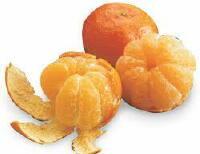

ok, Elide.
I’m currently working through that course and will take on board your comments in this article. Thank you.